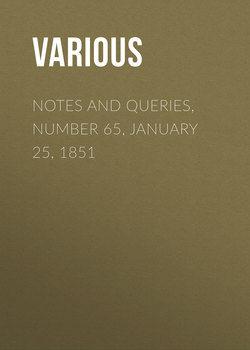Читать книгу Notes and Queries, Number 65, January 25, 1851 - Various - Страница 3
NOTES
TOUCHSTONE'S DIAL
Оглавление(Vol. ii., p. 405.)
The conjecture of Mr. Knight, in his note to As You Like It, and to which your correspondent J.M.B. has so instructively drawn our attention, is undoubtedly correct. The "sun-ring" or ring-dial, was probably the watch of our forefathers some thousand years previous to the invention of the modern chronometer, and its history is deserving of more attention than has hitherto been paid to it. Its immense antiquity in Europe is proved by its still existing in the remotest and least civilised districts of North England, Scotland, and the Western Isles, Ireland, and in Scandinavia. I have in my possession two such rings, both of brass. The one, nearly half an inch broad, and two inches in diameter, is from the Swedish island of Gothland, and is of more modern make. It is held by the finger and thumb clasping a small brass ear or handle, to the right of which a slit in the ring extends nearly one-third of the whole length. A small narrow band of brass (about one-fifth of the width) runs along the centre of the ring, and of course covers the slit. This narrow band is movable, and has a hole in one part through which the rays of the sun can fall. On each side of the band (to the right of the handle) letters, which stand for the names of the months, are inscribed on the ring as follows:—
Inside the ring, opposite to these letters, are the following figures for the hours:—
The small brass band was made movable that the ring-click might be properly set by the sun at stated periods, perhaps once a month.
The second sun-ring, which I bought in Stockholm in 1847, also "out of a deal of old iron," is smaller and much broader than the first, and is perhaps a hundred years older; it is also more ornamented. Otherwise its fashion is the same, the only difference being in the arrangement of the inside figures, which are as follows:—
The ring recovered by Mr. Knight evidently agrees with the above. I hope Mr. K. will, sooner or later, present the curiosity to our national museum,—which will be driven at last, if not by higher motives, by the mere force of public opinion and public indignation, to form a regularly arranged and grand collection of our own British antiquities in every branch, secular and religious, from the earliest times, down through the middle ages, to nearly our own days. Such an archæological department could count not only upon the assistance of the state, but upon rich and generous contributions from British sources, individuals and private societies, at home and abroad, as well as foreign help, at least in the way of exchange. But any such plan must be speedily and well organised and well announced!
I give the above details, not only because they relate to a passage in our immortal bard, who has ennobled and perpetuated every word and fact in his writings, but because they illustrate the astronomical antiquities of our own country and our kindred tribes during many centuries. These sun-dials are now very scarce, even in the high Scandinavian North, driven out as they have been by the watch, in the same manner as the ancient clog1 or Rune-staff (the carved wooden perpetual almanac) has been extirpated by the printed calendar, and now only exists in the cabinets of the curious. In fifty years more sun-rings will probably be quite extinct throughout Europe. I hope this will cause you to excuse my prolixity. Will no astronomer among your readers direct his attention to this subject? Does anything of the kind still linger in the East?
GEORGE STEPHENS.
Stockholm.
1
The Scandinavian Rune-staff is well known. An engraving of an ancient English clog (but with Roman characters, instead of Runic) is in Hone's Every-Day Book, vol. ii.
